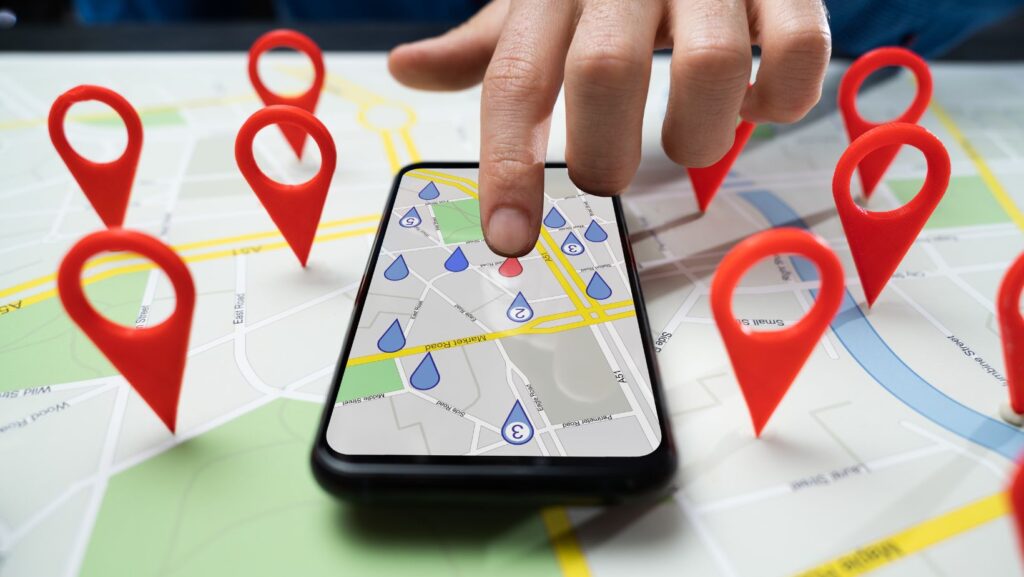In the ever-evolving landscape of mobile technology, Google Maps has emerged as a quintessential tool for navigation and exploration. Its integration into Windows Phones marks a significant milestone, offering users a seamless and intuitive mapping experience. This collaboration brings together the best of Google’s mapping capabilities with the unique features of Windows Phones, providing a powerful tool for users on the go.
Google Maps Windows Phones
The Early Stages of Google Maps on Mobile
 In the early stages of mobile technology, Google Maps emerged as a revolutionary tool, transforming how people navigated the world around them. Its introduction on Windows Phones marked a significant step in making powerful mapping and navigation accessible on mobile devices. This collaboration enabled users to leverage Google Maps’ comprehensive features, including street views, route planning, and location tracking, directly from their Windows Phones. The integration of Google Maps with Windows operating system provided a seamless experience, allowing users to access detailed maps and real-time traffic updates effortlessly. This move not only enhanced the functionality of Windows Phones but also solidified Google Maps’ position as an indispensable tool in the mobile landscape.
In the early stages of mobile technology, Google Maps emerged as a revolutionary tool, transforming how people navigated the world around them. Its introduction on Windows Phones marked a significant step in making powerful mapping and navigation accessible on mobile devices. This collaboration enabled users to leverage Google Maps’ comprehensive features, including street views, route planning, and location tracking, directly from their Windows Phones. The integration of Google Maps with Windows operating system provided a seamless experience, allowing users to access detailed maps and real-time traffic updates effortlessly. This move not only enhanced the functionality of Windows Phones but also solidified Google Maps’ position as an indispensable tool in the mobile landscape.
The Rise and Fall of Windows Phones
Windows Phones, with their unique tile-based interface, once held a promising position in the smartphone market. The inclusion of Google Maps further boosted their appeal by providing users with a reliable and efficient navigation solution. Users appreciated the ability to sync their Google Maps data across devices, ensuring a consistent and personalized experience. However, despite these advantages, Windows Phones faced challenges in maintaining their market share. The rise of iOS and Android platforms, coupled with a limited app ecosystem, contributed to the gradual decline of Windows Phones. As the demand decreased, developers, including Google, scaled back their support, leading to fewer updates and eventually, the decreased relevance of Google Maps on these devices. Despite this downturn, the collaboration between Google Maps and Windows Phones remains a noteworthy example of how technology can enhance mobility and navigation in the digital age.
Key Features of Google Maps on Windows Phones
Despite the decline in support, Google Maps on Windows Phones continues to offer key features that enhance user mobility and navigation. These features include detailed maps, real-time traffic updates, and tailored recommendations, which have been integral to the service since its integration with mobile platforms. For Windows Phone users, the application provides comprehensive route planning and street views, essential tools for navigating unfamiliar locations. These capabilities underscore the significance of the collaboration between Google Maps and Windows Phones in enriching the digital navigation experience.
Compatibility Challenges
 Navigating the technical landscape, users of Google Maps on Windows Phones face several compatibility challenges. Initially, the collaboration heralded a new era of mobile navigation, providing access to detailed maps, real-time traffic updates, and tailored recommendations directly from their devices. However, as the mobile industry evolved, the Windows Phone platform struggled to keep pace with the rapid advancements of iOS and Android systems. This discrepancy resulted in decreased support and updates for Google Maps on Windows Phones, impacting user experience.
Navigating the technical landscape, users of Google Maps on Windows Phones face several compatibility challenges. Initially, the collaboration heralded a new era of mobile navigation, providing access to detailed maps, real-time traffic updates, and tailored recommendations directly from their devices. However, as the mobile industry evolved, the Windows Phone platform struggled to keep pace with the rapid advancements of iOS and Android systems. This discrepancy resulted in decreased support and updates for Google Maps on Windows Phones, impacting user experience.
Key issues include the absence of the latest features and updates that users on more dominant platforms enjoy. For instance, while Google Maps continues to offer essential navigation tools like comprehensive route planning and street views on Windows Phones, the integration doesn’t receive the same level of attention or regular enhancements.
Alternatives to Google Maps for Windows Phone Users
While Google Maps has been a staple for Windows Phone users, offering unmatched navigation and detailed insights, the evolving tech landscape suggests looking into alternatives. With the dwindling support for Windows Phones, users might find it beneficial to explore other navigation apps that are updated regularly and cater to their specific needs. Apps like Waze, Here WeGo, and MapQuest have emerged as viable options, providing real-time traffic updates, route planning, and user-friendly interfaces. These alternatives not only ensure that Windows Phone users stay on track but also offer fresh features that keep up with the latest technological advancements. Opting for these can enhance the navigation experience, ensuring reliability and efficiency on the go.

